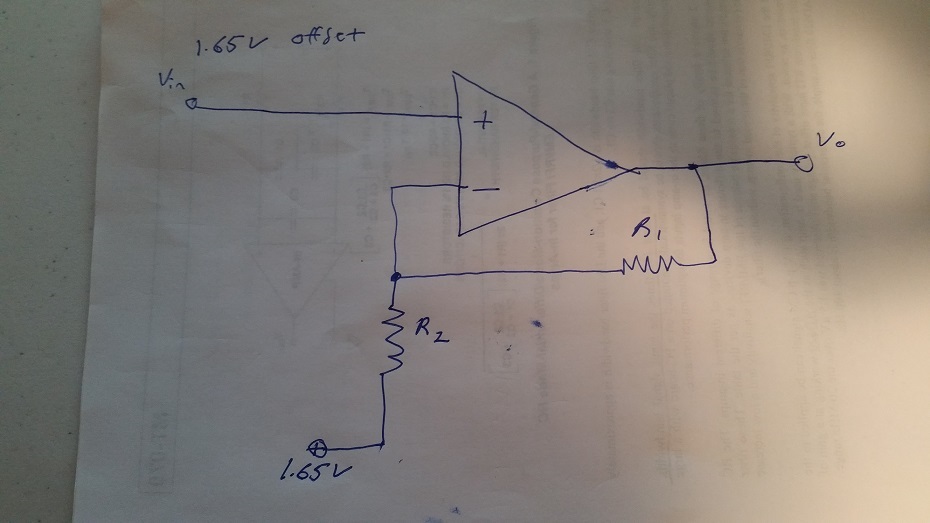Hello,
I have somewhat of a general op-amp configuration question and need to get some feedback from someone more experienced in analog design than me. I have the below schematics:
This is a single stage in an analog input channel for a product. The input will have a constant offset of 1.65V. This is because the sensor for this input channel is a wheatstone bridge. If I want full DC performance my first question is, can inject an offset voltage of 1.65V to the feedback divider so I'm not gaining my steady state DC input content. This looks like it works and I've found some app notes on the net talking about this, but I'm not the greatest analog engineer so I need some feedback.
This would be an idea configuration for me if it does in fact allow me to gain up all the content on the input that deviates from the 1.65V stead state input. The second part to this (assuming this is in fact a legitimate design tactic) is how do I figure out the gains? I've calculated a transfer function, but I can't factor it in a way to get Vo/Vi like you normally would.
So two questions:
1. Does this make sense / is this a legit technique to accomplish applying gain to an input signal that has an offset? I am trying to get away from AC coupling so this input can work from absolute DC to my cut Fc of the LPF.
2. How do you figure out what your gains are now that there is an offset in the gain feedback path?
Rob


